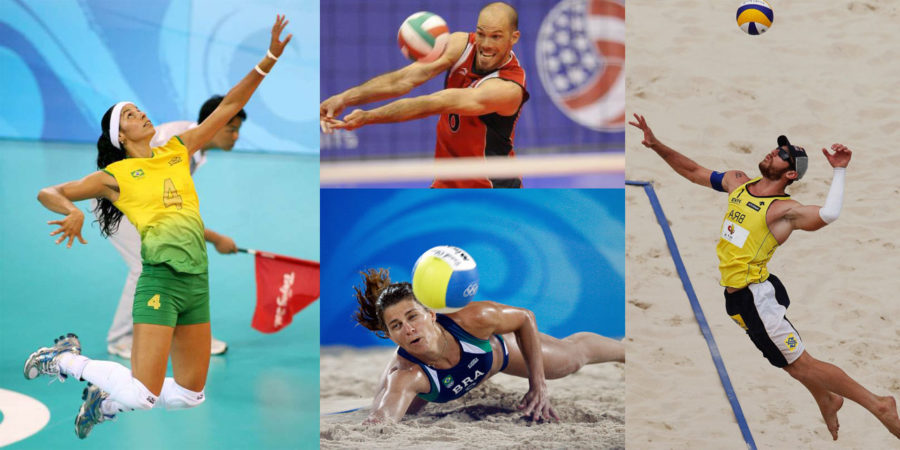Beach vs. Indoor Volleyball
March 26, 2018
At first glance, the sport of beach volleyball may seem intrinsically identical to that of indoor volleyball. However, a closer look does not constitute the same consensus. As a person who has played both indoor and beach volleyball for a very long time, I feel qualified to aptly contrast the two in terms of rules, popularity, and overall atmosphere. In terms of rules, there are a plethora of prominent differences between the sports.
- Number of players – As for indoor volleyball, there are 6 members of a team allowed on the court during live play, while in beach volleyball there are only two members playing.
- Court Sizing – An indoor volleyball court measures nearly 60 feet long and 30 feet wide, while a beach volleyball court measures about 52 feet long by 26 feet wide.
- Blocks – In each sport, three touches are allowed by each team before the ball must return to the other side of the court. However, when a player blocks the ball at the net in an indoor game, the rest of his/her team is allowed three more touches to get the ball over the net. This changes in beach volleyball, whereas a block counts as one of the three touches. Therefore, when a beach volleyball player blocks the ball at the net, the pair only has two touches left to send the ball back over the net.
- Tipping Rules – Indoor volleyball players are allowed to spread out their hands in an open formation and swat the ball over the net at any point. However, beach volleyball players must close their hand if they wish to “tip” the ball over the net in this fashion.
- Reffing – Indoor volleyball tournaments are regulated by professionally trained officials at all times. However, beach volleyball tournaments are typically more laid back, as other players typically regulate the rules of the games.
While the differences in regulations and rules make up for the majority of the gap between indoor and beach volleyball, there are also substantial shifts in their overall popularity and atmospheres. In general, indoor volleyball is a more popular sport, mostly because it can be played anywhere where a gym is available. Beach volleyball requires a sand court and acceptable weather conditions. Therefore, beach volleyball cannot be played in regions where it snows or rains very often. However, indoor volleyball remains popular throughout all regions and climates worldwide. Moreover, there are significantly more collegiate indoor volleyball programs than collegiate beach volleyball programs. In 2017, 55 schools sponsored Division 1 beach volleyball programs, while 330 schools sponsored Division 1 indoor volleyball programs. Apart from just the numbers, there is a significant difference between the cultures of both the sports. Typically, indoor volleyball sponsors an extremely competitive, tireless atmosphere. In my experience, indoor volleyball tournaments are typically held in large convention centers with hundreds of courts and thousands of teams playing at once. As one would expect, this creates an extremely stressful and hectic environment for players. At beach volleyball tournaments, there are not typically as many teams and the courts are spread out over miles of beach. This fosters a more relaxed environment that allows players to remain calm and focus on their individual games. All in all, beach and indoor volleyball contrast in several different ways, including their rules, popularity, and overall atmosphere.













